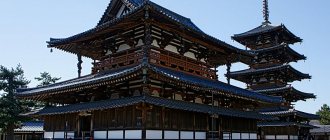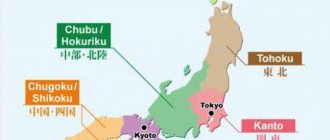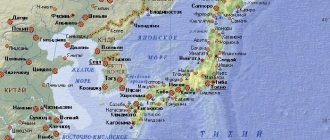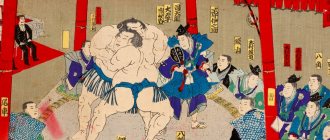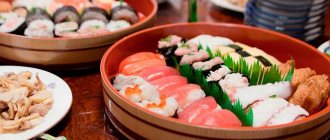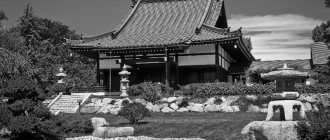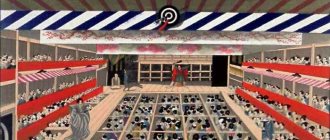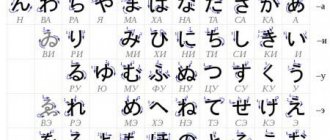Currently, Japanese art movements are gaining more and more popularity. A person who wants to learn something new about the culture of the Land of the Rising Sun may have a question about the meaning of the word “manga”.
Every resident of Japan, young and old, knows what manga is, but in Russia this trend is only gaining momentum. In Japan, this word refers to a special type of comic book. Only the essence of the information and its presentation in them are not the same as in the American ones we are used to. Cartoons in newspapers, funny pictures, grotesques - all this is manga.
History of appearance
In Japan, comics, known as manga since 1814, have been around for a very long time. The first ancestors of the modern style are sketches of Japanese monks dating back to the twelfth century. These pictures were caricatured and satirical, and they depicted violators of the monastery's regulations. There are also images of animal life in this style, made by the Buddhist Toba, also dating back to the 12th century. The term "manga" was coined by Japanese artist Katsushika Hokusai in the early nineteenth century. He used this word to designate his cartoon sketches, and when translated into Russian, “manga” means “sloppy (man) picture (ga).”
Manga acquired the form that is known today after World War II. Tezuka Osamu made a great contribution to the development of Japanese comics, who, with the help of his students, brought this type of art into mass culture. Comic book creators (manga artists) most often work without partners and not only draw manga, but also write text for it. Although in some cases up to 4 people work on the creation of the next work. They know better than anyone how to read manga correctly.
Currently, manga is distinguished between Japanese, Chinese (manhua) and Korean (manhwa). The sound of the term in these languages is somewhat different, but the hieroglyph is the same. Also, not only professional manga is becoming widespread, but also its amateur version - doujinshi. Very often, famous comic book creators started out as amateurs.
Manga~ [漫画]
Manga (Japanese: 漫画, マンガ, [mã̠ŋɡa̠]) female, coll. are Japanese comic books, sometimes called komikku (コミック). Manga, in the form in which it currently exists, began to develop after the end of World War II, being heavily influenced by the Western tradition, but has deep roots in earlier Japanese art.
In Japan, manga is read by people of all ages, it is respected both as a form of fine art and as a literary phenomenon, so there are many works of a wide variety of genres and on a wide variety of topics: adventure, romance, sports, history, humor, science fiction, horror, erotica , business and others. Since the 1950s, manga has become a major industry in Japanese book publishing, with a turnover of 481
billion yen in 2006, and in 2009 - 420 billion. It became popular in the rest of the world, especially in the USA, where sales as of 2006 were in the region of 175-200 million dollars. Almost all manga is drawn and published in black and white, although there is also color, for example, Colorful, the name of which is translated from English as “colorful”. Based on popular manga, most often long manga series (sometimes unfinished),
anime is produced, and light novels, video games, and other derivative works may also be created. Creating an anime based on an existing manga makes sense from a commercial point of view - drawing manga is usually less expensive, and animation studios have the opportunity to determine whether a particular manga has proven popular so that it can be
film
The script for film adaptations may undergo some changes: scenes of fights and fights, if any, are softened, and overly explicit scenes are removed. The artist who draws manga is called a mangaka, and is often also the author of the script. If the writing of the script is undertaken by an individual, then such a scriptwriter is called gensakusha (or, more precisely, manga-gensakusha). It happens that a manga is created based on an already existing anime or film, for example, based on Star Wars. However, anime and "otaku" culture would not have arisen without manga, because few producers are willing to invest time and money into a project that has not proven its popularity by paying off in comic form.
▀▄ ▀▄ ▀▄ ▀▄ ▀▄ ▀▄ ▀▄ ▀▄ ▀▄ ▀▄ ▀▄ ▀▄
— — — — — — — — —
HISTORY ⛬
— — — — — — — — —
The first mention of the creation of stories in pictures in Japan dates back to the 12th century, when the Buddhist monk Toba (another name is Kakuyu) drew four humorous stories telling about animals depicting people, and about Buddhist monks who violated the rule. These stories - "Chojugiga" - were four paper scrolls with ink drawings and captions. Nowadays they are kept in the monastery where Toba lived. The techniques he used in his works laid the foundations of modern manga, such as the depiction of human legs in a state of running.
As manga developed, it absorbed the traditions of ukiyo-e and Western techniques. After the Meiji Restoration, when the Japanese Iron Curtain fell and the modernization of Japan began, Western comics began to be imported into the country, and artists began to learn from their foreign colleagues the features of composition, proportions, color - things that were not given attention in ukiyo-e, since the meaning and the idea of drawing were considered more important than form. In 1902, a humorous comic strip called Tagosaki to Makube no Toukyou kenbutsu by Rakuten Kitazawa began publishing. This work, created in the likeness of American comic books, became the first “serial” comic book in Japan. In the period 1900–1940, manga did not play the role of a significant social phenomenon; it was rather one of the fashionable hobbies of young people. After Emperor Taisho came to power, manga artists began to experiment with foreign graphic styles, and also began to exchange experiences with foreign artists. For example, in the 1920s, a group of Japanese artists visited the United States, where the comics industry was booming at that time. Manga in its modern form began to emerge during and especially after the Second World War. The development of manga was greatly influenced by European caricature and American comics, which became famous in Japan in the second half of the 19th century.
During the times of Japanese militarism, manga served propaganda purposes and was printed on good paper and in color. Its publication was funded by the state (unofficially it is called “Tokyo manga”). After the end of the war, when the country lay in ruins, it was replaced by the so-called. “Osaka” manga, published on the cheapest paper and sold for next to nothing. It was at this time, in 1947, that Osamu Tezuka released his manga Shin Takarajima (新宝島, “New Treasure Island”), which sold a fantastic 400,000 copies for a completely devastated country. With this work, Tezuka defined many of the stylistic components of manga in its modern form. It was the first to use sound effects, close-ups, graphic emphasizing movement in the frame - in a word, all those graphic techniques without which modern manga is unthinkable. New Treasure Island and the later Astro Boy became incredibly popular. During his life, Tezuka created many more works, acquired students and followers who developed his ideas, and made manga a full-fledged (if not the main) direction of mass culture. Manga actively entered the world market in the early and mid-1990s. It was associated with the economic crisis, due to which Japan was looking for access to foreign markets.
Currently, almost the entire population of Japan is drawn into the world of manga. It exists as part of the press. The circulation of popular works - One Piece and Naruto - is comparable to the circulation of the Harry Potter books, but they are still declining. Among the reasons why the Japanese began to read less manga are an aging society and a falling birth rate in Japan, as well as publishers who, in the 1980s and 1990s, trying to maintain the same audience and focusing on adult readers, were not interested in attracting young people. Nowadays, children spend more time playing computer games than reading. In this regard, publishers are beginning to focus on exports to the USA and Europe. Former Prime Minister Taro Aso, a fan of manga and anime, believes that manga is one of the ways to lead the country out of the economic crisis and improve its image on the world stage. “By turning the popularity of Japanese soft power into a business, we can create a colossal industry worth 20-30 trillion yen by 2021 and employ about 500 thousand more people,” Taro Aso said in April 2009.
▀▄ ▀▄ ▀▄ ▀▄ ▀▄ ▀▄ ▀▄ ▀▄ ▀▄ ▀▄ ▀▄ ▀▄
MANGA IN OTHER COUNTRIES
The influence of manga on the international market has increased significantly over the past few decades. Manga is most widely represented outside of Japan in the USA and Canada, Germany, Italy, France, Spain, and Poland, where there are several publishing houses dealing with manga and a fairly large reader base has been formed. Very often, manga is edited before being published in other countries in order to adapt to the tastes of the local readership. In this case, there may be situations where the edited manga has significant differences from the Japanese original.
USA
America was one of the first countries where translated manga began to appear. In the 1970s and 1980s, it was practically inaccessible to the average reader, unlike anime. However, today quite large publishers publish manga in English: Tokyopop, Viz Media, Del Rey, Dark Horse Comics. One of the first works translated into English was Barefoot Gen, which tells the story of the atomic bombing of Hiroshima. The late 1980s saw the releases of Golgo 13 (1986), Lone Wolf and Cub from First Comics (1987), Area 88 and Mai the Psychic Girl (1987) from Viz Media and Eclipse Comics.
A boy in an American store reads Black Cat
One of the first fans of manga in the United States was artist and comic book author Frank Miller. In 1986, entrepreneur and translator Toren Smith founded the publishing house Studio Proteus, working in collaboration with Viz, Innovation Publishing, Eclipse Comics and Dark Horse Comics. A large number of manga have been translated into Studio Proteus, including Appleseed and My Goddess! Successful manga series were mostly associated with series of the same name, for example, the famous “Ghost in the Shell”, “Sailor Moon”, which by 1995-1998. was published in more than twenty-three countries, including China, Brazil, Australia, the USA and most European countries. In 1996, Tokyopop, the largest publisher of American manga today, was founded.
Japanese manga accounts for about 2/3 of the graphic works market in the United States. In 2006, the profit from its sales amounted to $200 million, and in 2007 - 210 million. The market structure and public preferences in the United States are quite reminiscent of Japanese ones, although the volumes, of course, are still not comparable. Their own manga magazines appeared: Shojo Beat with a circulation of 38 thousand copies, Shonen Jump USA. Articles dedicated to this industry appear in major print publications: New York Times, Time, The Wall Street Journal, Wired.
American manga publishers are known for their puritanism: published works are regularly censored.
Europe and Asia
Manga came to Europe through France and Italy, where anime began showing in the 1970s.
In France, the manga market is very developed and known for its versatility. Popular in this country include works in genres that have not resonated with readers in other countries outside Japan, such as adult drama, experimental and avant-garde works. Authors who are not particularly well-known in the West, such as Jiro Taniguchi, have gained great weight in France. This is partly because France has a strong comic book culture.
In Germany in 2001, for the first time outside Japan, manga began to be published in the “phone book” format in the Japanese style. Before this, in the West, manga was published in the format of Western comics - in monthly issues of one chapter, then republished in the form of separate volumes. The first such magazine was Banzai, designed for a youth audience and existed until 2006. At the beginning of 2003, the shojo magazine Daisuki began publishing. The periodical format, new to Western readers, has become successful, and now almost all foreign manga publishers are abandoning individual issues, switching to “phone books.”
Manga has also become widespread in Asian countries - Indonesia, Thailand, Malaysia. Manga for children enjoyed particular success here, while manga intended for an adult audience was subject to various censorship restrictions. Illegal distribution of manga is especially common in Taiwan. This is due to lax copyright laws and widespread consumer demand for manga. Piracy in this area is also common in South Korea and Hong Kong.
Russia
Of all the developed European countries, manga is represented worst of all in Russia. Presumably, this is due to the low popularity of comics in Russia: they are generally considered children's literature, while manga is intended for an older audience. According to director Lev Yelin, in Japan they love comics with sex and violence, but “in Russia, hardly anyone will take on this niche.” As a reviewer for Money magazine believes, the prospects are “simply brilliant,” “especially since Japanese licenses are even cheaper than American ones - $10-20 per page.” Sergei Kharlamov from the Sakura-Press publishing house considers this niche to be promising, but difficult to market, since “in Russia, comics are considered children’s literature.”
As for translation licenses, the initiative usually comes from Russian publishers. At the moment, there are several legal publishers: Sakura Press (which published Ranma ½), Comic Factory, Palma Press and others. Currently, the licenses for the most commercially successful manga series are owned by Comix-ART, created in 2008. That same year, Comix-ART, a partner of the Eksmo publishing house, acquired the rights to Death Note, Naruto and Bleach, as well as several other works, including Gravitation and Princess Ai.
Russian publishers, as a rule, publish not only manga, but also manhwa, and do not make a distinction between them, calling both manga. In particular, Comix-ART, for commercial reasons, calls the American manga "Bizenghast" and "Van-Von Hunter" manga, and on the official website of the publishing house "Istari Comics" in the "Manga" section there is, for example, the manhua "KET" (English Confidential Assassination Troop by Taiwanese author Fung Yinpang.
Projects similar to manga magazines in Japan have appeared - the anthology of Russian manga MNG from the Comics Factory publishing house, which is going to print manga drawn in Russia. In July 2008, the first major collection of amateur Russian manga, Manga Cafe, was released.
▀▄ ▀▄ ▀▄ ▀▄ ▀▄ ▀▄ ▀▄ ▀▄ ▀▄ ▀▄ ▀▄ ▀▄
PRIZES AND MUSEUMS
There are a large number of awards in the Japanese manga industry, sponsored by major publishers. As an example, the following can be cited: Dengeki Comic Grand Prix (short manga, “singles”), Kodansha Manga Award (several genres), Seiun Award, Shogakukan Manga Award, Tezuka Award awarded to emerging manga artists, Osamu Tezuka Cultural Award and others. Museums dedicated to manga were also organized: the Osamu Tezuka Manga Museum, the Ghibli Museum, and the Kyoto International Manga Museum. In Russia, manga is presented at the annual Moscow festival of hand-drawn stories “KomMissia”, where both professionals and amateur artists from Russia and other countries participate.
In 2007, the International Manga Award arose, for which artists from China, Germany, France, Malaysia, Taiwan, Russia, Great Britain, and Spain competed. According to Prime Minister Taro Aso, the establishment of this prize will allow foreign authors to deepen their understanding of Japanese culture. In 2008, Russian mangaka Svetlana Chezhina took second place at the International Manga Award with the English version of her work “Portrait/ShoZo”, published in Russia by Maglatronics publishing house. Previously, among international competitions, the annual international festival de la Bande Dessinee in France was considered the most honorable (only manga translated into French participates).
▀▄ ▀▄ ▀▄ ▀▄ ▀▄ ▀▄ ▀▄ ▀▄ ▀▄ ▀▄ ▀▄ ▀▄
INFLUENCE AND CRITICISM
Manga constitutes one of the main segments of Japanese popular culture and is the basis of many visual arts. The popularity of manga both in Japan and in other countries is described by some experts as phenomenal. In Japan, manga is the subject of frequent controversy and has both supporters and opponents. One of the main reasons for the widespread popularity of manga in Japan is the Japanese people's tendency to perceive information in the form of images. Many experts and artists consider manga to be a unique part of Japanese culture and advocate its preservation as such. Among opponents, opinions are expressed that manga is a stultifying form of art, promotes cruelty and anti-humanism, is associated in people only with violence and eroticism, and forms “flat thinking” in young people when the artistic image is replaced by a stereotypical designation. In Japan, the first social movements against manga formed back in the 1950s, with parents, teachers and government officials expressing concern about the possible negative consequences of excessive interest in comics.
Frederik Schodt, in his book Dreamland Japan: Writings on Modern Manga, called manga "a fully formed artistic medium on a par with novels and films." American philosopher Noel Carroll classified manga (as well as anime) into the category of mass art.
Distribution in Japan
In Japan, comics in this format are so beloved that more than a billion copies of collections of various topics and formats are published annually. They are so popular that more than twenty-five collections are published per family, and about ten issues per year per person. But even these numbers cannot convey the scale of this hobby. It often happens that the latest issue of a magazine remains after reading on a seat in a subway car or on a cafe table. He immediately finds a new owner.
Most often, manga is published in the form of books, which in terms of the number of pages can compete even with reference books. Usually up to twenty stories are published in these books, and their plot continues for several issues. Japanese comics can also be found in the form of colorful magazines. The stories that are most in demand are usually repeated in a specialized edition in the form of thick books containing different episodes of the same story. The most popular of them become the basis for serial anime (Japanese cartoons).
The culture of Japanese comics in the Land of the Rising Sun is high; they are read by the entire population of the country, regardless of age, status and gender. The assortment on store shelves or specialized kiosks reaches hundreds of items. The passion for this trend has reached the point of 24-hour sales of magazines in vending machines.
Manga and anime. How are they connected?
Well, I think that the connection between these two genres of Japanese art is outrageously obvious. They flow from each other, so to speak. Naturally, manga is the progenitor of such a direction as anime. By and large, anime is animated manga transferred to television screens.
Nowadays, it is quite common to see how anime is created based on manga plots, and vice versa. Sometimes this leads to funny situations when, at first, an anime is based on a manga that is not yet finished, the cartoon series quickly catches up with its text counterpart, after which the plot of the works is divided, and we get two different endings.
Who reads manga?
Manga... There is probably no need to explain what comics are. But Japanese cartoon stories are not just a collection of stories with cartoon images. The country's former prime minister called this kind of periodicals one of the ways to lead the country out of the economic crisis and improve its image on the world stage. What is so interesting that fans see in her? One of the features of this genre is the direction of style towards a specific target audience. For example, there are manga comics for boys or girls. Adults – men and women, from very different social backgrounds – can also satisfy their interests. And, of course, publishers pay special attention to children. Most comics are aimed at children's audiences. But even in this category there are gradations: manga is divided into comics for boys and comics for girls.
In addition, manga is divided into genres. Specialized publications satisfy the reader's needs in science fiction, adventure, gambling and pornography, stories about the life and exploits of superheroes, etc. It is very difficult to compile a complete list of specialized genres, and the classification by age categories is also quite arbitrary. It's common to see an adult leafing through a children's manga. But it also happens the other way around: a completely scientific journal in this style may end up in the hands of a schoolchild.
Manga, whose adventures take the reader into a world of fantasy, allows you to revel in freedom. The education system in Japan excludes freethinking and prepares everyone according to the same model. As a result, young people only give vent to their aspirations and individuality in manga.
The adult generation relaxes while flipping through the next magazine, the topics of which often touch on all pressing issues and allow philosophizing on unexpected topics. Therefore, manga for adults is not just an interesting pastime, but a world of hidden desires that you want to dive into again and again. Like a drug.
Manga examples
Astro Boy (Ambassador Atom, Mighty Atom)
The famous manga series, written and illustrated by Osamu Tezuka, is comic fiction depicting a futuristic planet where Robots live alongside humans. The circulation of this series is approximately 100 million copies; manga is still popular today.
Interestingly, in the 1960s, parents opposed the publication of this manga for its depiction of violence; now this work is valued for its humanistic ideals. Perhaps the attitude towards robots, which have become part of the life of the Japanese, has changed.
Mrs. Sazae
Published in 1947, this manga, which tells with humor and optimism about the girl Sazae and her family, who had to survive the difficult times of the occupation and who found their place in life in the post-war period, is still one of the most sold.
Naruto
This is the story of the ninja Naruto, who is trying to achieve fame and be like his ideal - the most powerful ninja in their village. An anime and video games have been created based on the manga, which was published in 1997.
Slam Dunk
The sports-themed manga, which sold 120 million copies in 2012, is about a basketball team and its leader.
Case is closed
The manga periodical under this title is about a detective who helps the police investigate various cases.
Distinctive features
A distinctive feature of manga magazines is their volume (up to a thousand pages). But this circumstance does not affect the speed of reading the material - a reader usually spends about half an hour on a medium-thick magazine (about three hundred and fifty pages). The average Japanese knows how to read manga correctly, and masters the material of one page in about 4 seconds. The comics are prepared in such a way that the information from them is absorbed literally at one glance. And this is their main difference from their European or American counterparts, which are overloaded with a textual component.
The style of Japanese minimalism, familiar from childhood, is also inherent in these stories. Therefore, most Japanese know how to create manga. Storyboarding, editing, and symbolism are used to their full potential in comics. Instead of extensive explanation, the manga contains hints and mystery. A raised eyebrow, a hand gesture, a directed gaze will tell a Japanese more than the most detailed explanations using text. The time and place of action are indicated by one or two hints in the background - a tree branch, the sun at its zenith, and the emotions of the moment are conveyed by a smile, a tear on the cheek or an angry look. These ways of expressing actions and emotions allow you not to carefully read the text for each picture, but to perceive the image as a whole, barely looking at it.
Drawing in the genre of Japanese comics
Images in Japanese comics are distinguished by their monochrome nature. Basically, only the cover of a book or magazine is designed using color, while the comic itself is presented in black and white format. Occasionally, in order to highlight particularly important points, manga artists decorate individual illustrations with color.
Before drawing manga, a fan of this genre will need to know the distinctive features of this particular style of drawing. The drawings are read from right to left, are clearly storyboarded, and the speech is written in the same way as in American comics - “in bubbles.”
The characters of Japanese comics convey their emotional state surprisingly accurately. To do this, manga creators use a proprietary method - a special drawing of various parts of the face. A criss-cross wrinkle drawn on a character's forehead accurately conveys anger, a raised eyebrow depicts surprise, and a square-shaped mouth clearly conveys rage.
The peculiar “masks” of the heroes convey to the reader hostility and admiration, envy, surprise and joy. For any human emotion, the artists of these comics have the exact way to convey it. And it is precisely because of this that the main thing when creating manga is the amazing drawing of the characters’ facial features.
Features of reading manga
When meeting real Japanese manga for the first time, residents of the Western cultural space may experience rejection . The fact is that the drawings were originally created in accordance with the rules of Japanese writing.
And if American comics are read from left to right, then manga will have to start “from the end”: from top to bottom and from right to left.
However, sites with amateur translations try to adapt the content to the preferences of a particular audience and mirror the image along the vertical axis. At the same time, some large companies that publish Japanese comics (for example, the American Tokyopop) release manga in two formats at once - original and mirrored form.
On rare occasions, to commemorate an anniversary chapter or significant event, a mangaka (manga creator) may post a couple of color pages.
This is considered a real gift for fans of the series. Well, animation is a real holiday when previously static images come to life and receive the voices of dubbing professionals. Good luck to you! See you soon on the blog pages KtoNaNovenkogo.ru
The influence of manga: research results
The transmission of important information by drawing is already genetically embedded in the Japanese nation. Even writing in this country is closest to fine art. With the development of television in Japan, the understanding of the superiority of the visual method of transmitting information over the textual one is only strengthening.
Researchers of the influence of manga, as well as teachers and psychologists, note that children who grew up on these comics more easily understand the essence of the problem and find ways to solve it. This is the result of applying informal logic when reading this kind of periodicals. Another achievement of young Japanese residents is attributed to their passion for comics - scientists believe that it is thanks to this that young people can easily master programming and other work with computer technology at a professional level. A logical question arises: “What is manga: funny, simple pictures or a form of education of the future?”
Heroes in manga
Anyone who first heard about these unique comics involuntarily asks several questions. What does this or that character look like, what are the differences between good characters and bad characters? Is it true that an antagonist and a villain are the same thing?
When talking about heroes and villains, it is always worth remembering that the characters are very controversial. They are called Akunins - standing between good and evil. It is through illustrated stories that readers learn that it is wrong to confuse the concepts of “villain” and “antagonist.”
The antagonist seeks to prevent the protagonist from achieving his goals, while trying to “get through” to the enemy and warning that stubbornness is fraught with disaster. The villain is a deliberately dishonest character, extremely cruel, eager to achieve selfish goals by any means. A clear conclusion can be drawn: any villain can be called an antagonist, but not vice versa.
Science in manga style
Japanese comics, their popularity and the effectiveness of assimilation of visual information have so attracted the attention of scientists that recently the publication of serious scientific literature and textbooks in this style has been gaining momentum.
Thanks to a series of experiments, it was possible to prove that after reading a course in economic theory, presented in manga style, memorization and mastery of complex economic concepts occurs at an unconscious level. Discovering economic themes in adventure stories requires minimal time spent reading them (2-3 hours), but the result is amazing. As a result, students calmly operate with terms and know the principles of operation of market mechanisms.
A number of large companies adopt this style and use it when creating instructions, working documents, and catalogs. For example, I prepared instructions for workers in the form of a comic book magazine. It explains in detail the new technologies used in the construction of high-rise buildings.
Manga by genre
Since in Japan manga is equated to the genre of fine art and literature at the same time, the variety of such works is amazing. They come out in a variety of versions: romance and horror, fantasy and erotica, business and sports. History, adventure, romance - it’s impossible to list all the directions and genres!
Manga by genre, as in any other form of art, is divided into more popular ones and those that are in demand only among a specific target audience. The most widely read stories include those that touch on gender relations, martial arts, everyday life and romance.
Kodomo is a genre created specifically for kids. This is a children's manga. What is Kodomo? What are its distinctive features? First of all, these comics are distinguished by the simplicity of the plot (sometimes the idea and its development are completely absent). The drawing of the characters is greatly simplified and resembles the American style of execution. There are no scenes of cruelty at all, and the manga itself is often entertaining. Manga artists only teach children to perceive their creations.
Shonen is intended for boys between twelve and eighteen years old. Every mangaka knows how to draw manga for this audience. Dynamism, speed of plot development, more adventures and, of course, romance. Themes of rivalry in sports, life and love are very common in this genre, and the girls are drawn as exaggeratedly beautiful. These are all things that might interest a teenage boy.
But the most popular manga in Japan is in the shoujo genre. It is designed for the most reading target audience - young girls in the range from 12 to 18 years old. The peculiarity of this genre is that the central character of the plot is a girl or girl. The issues of her self-determination in the world around her and the process of the heroine’s formation as a person are touched upon. And, of course, it’s not complete without romantic adventures.
Here, the typical manga conventions of depiction are fully manifested, and the characters are very energetic, beautiful and full of enthusiasm in their relationships with the world around them. Thanks to this, manga for girls is firmly winning the hearts of the younger generation.
Place of birth: Japan
The word "manga" in Japanese means "funny pictures": it consists of two kanji (kanji): man (whimsical or improvised, cheerful) and ga (pictures) 漫画. This term is also interpreted as “novels in pictures.” The easiest and most superficial definition: manga is Japanese comics.
The Japanese are proud that one of the most amazing phenomena in modern art and literature has its roots in their country. Back in the XII – XIII centuries. In Japan, a series of drawings appeared depicting frogs and rabbits with an unusual technique of drawing legs that imitate movements. In the XVIII-XIX centuries. books with funny pictures were prepared by famous Japanese artists Santo Kyoden and Hokusai Katsushika. Hokusai Katsushika is considered the originator of the term "manga".
The ancient image technology was used by modern mangaka - manga authors who invented their own style. Among the most successful manga artists were Osamu Tezuka, considered the founding father of modern mass-produced manga art, creator of the famous Astro Boy (Ambassador Atom), and Machiko Hasegawa, author of Sazae-san (Lady Sazae). Their painting technique included depicting beautiful characters with large eyes; they used close-ups and conveyed movements and emotions in the drawing.
Portrayal of emotions in manga (recommended by Tezuka)
Special comics for adults
The adult population of Japan is becoming a separate target audience for comic book creators. These works contain all the revelations of modern life - not only romance, but also cruelty and violence.
Also, manga for adults is distinguished by its content, which contains scenes not only of an erotic, but also of a more explicit nature. There are also specific genres such as yuri, shonen-ai and yaoi, which tell about same-sex relationships.
But there is also a separate style for a female audience - josei. It is characterized by the development of the plot from school to old age. That is, the entire life of an individual is collected in manga. Stories created for middle-aged women are very realistic and ordinary, and therefore they are in good demand.
Manga in Russia
In Russia, manga comics are a fairly new phenomenon. Interest in this type of art from the Land of the Rising Sun is just awakening. Almost all stories in the style of Japanese comics that can be found and read on the territory of our state are translations of fans and amateurs. Spending their own time and money, they adapt popular magazines in Japan and distribute them via the Internet. As a result, anyone who wants to touch the world of modern Japan can do so for free.
There are only two publishers officially producing manga magazines in Russia. These are Comic Book Factory and Sakura Press. You can also find periodicals in this style from several illegal publishers. Therefore, simply going to a bookstore and buying the latest issue of a manga whose adventures you want to read is unlikely to work. One of the first publications published in the Russian Federation was the work of Rumiko Takahashi “Ranma ½”.

